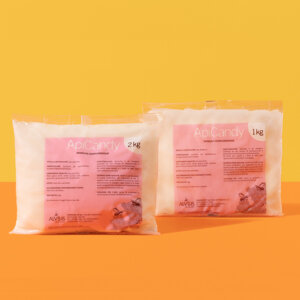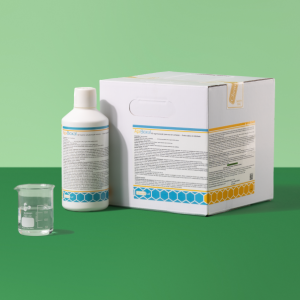Description
ApiCandy Protein
— Sugary complementary feed
Protein Candy for Bees
The same quality characteristics as Apicandy with the addition of a significant proportion of protein (3.5%) from inactive brewer's yeast.
How to use it
Open the package and feed as is to bees
Composition
Beet sugar (sucrose); Beet sugar syrup (fructose/glucose); Inactive brewer's yeast; Water.
Advantages
The derivation of the protein source from inactive brewer's yeast ensures a balanced amino acid profile, the most similar in nature to pollen.
All the characteristics of Apicandy remain unchanged, namely the exclusive derivation from non-GMO beet sugar, low water content and high fructose content.
Confezioni
1 kg bags in boxes of 12 pieces
Shelf-life
Best before 18 months
from packaging date
Frequently asked questions

Why inactive brewer's yeast as a protein source?
It is a quality choice. Inactive brewer’s yeast has a complete amino acid profile, very similar to pollen. Other protein sources, such as soy bean flour, are deficient in certain amino acids essential for bees or may contain sugars that cannot be fully metabolised. Still others, such as albumin, lysozyme or milk powder are allergens and can cause an allergic reaction in sensitive individuals who ingest hive products.
Why is it important to feed protein-enriched animal feed at certain times of the year?
In nature, bees get their protein from pollen. In the event of a shortage, the colony stops brood rearing before rearing malnourished larvae, or draws from pollen reserves stored in the combs (bee bread) as well as from body reserves (fat body). In extreme cases, cannibalisation of young brood occurs. The use of ApiCandy Protein can compensate for protein deficiencies.
When is the use of Apicandy Protein recommended?
In autumn, to strengthen the fat body. In spring when pollen resources are of low nutritional quality. During this period, a good protein supply promotes the development of the hypopharyngeal glands and thus the production of royal jelly, which is the main nutrient in the larval stages, thus guaranteeing excellent colony recovery. Whenever there are pollen deficiencies in the reference area.




